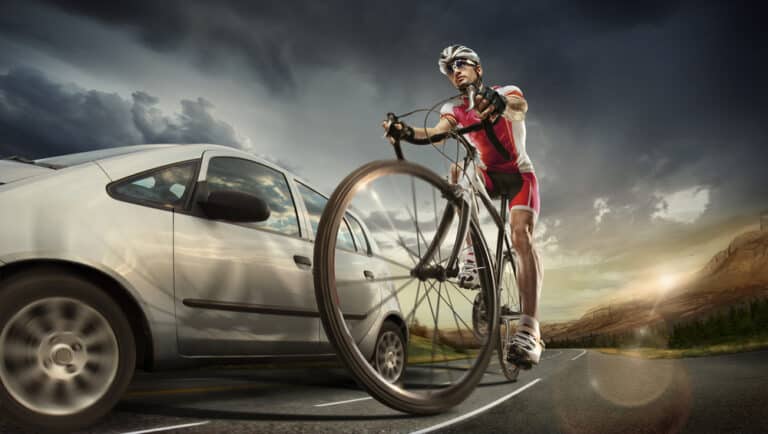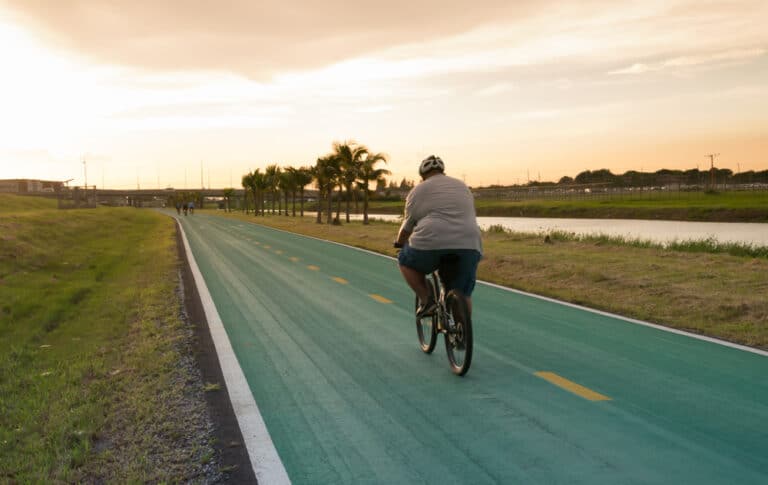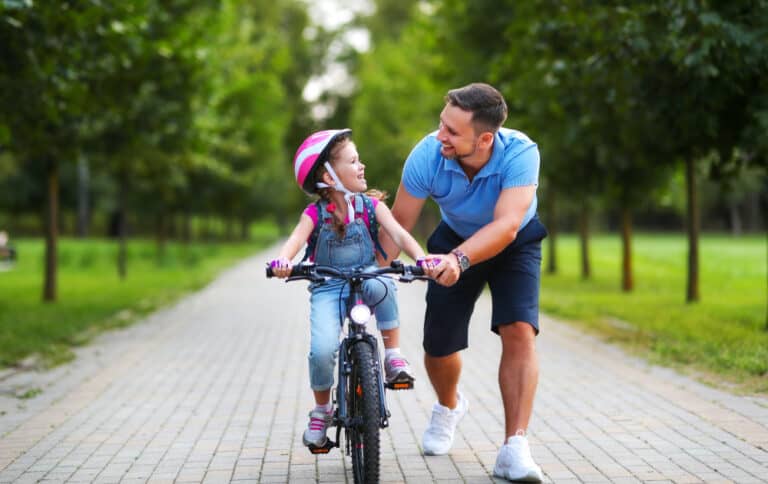How Long Does It Take To Learn How To Ride A Bike?

Going for a bike ride can be fun and relaxing, especially while on holiday in a beautiful location or for fitness purposes. Thankfully, anyone in good health who wants to learn can enjoy this fun activity. So, how long does it take to learn how to ride a bike?
Learning how to ride a bike can take a few hours up to a few weeks. How determined you are to learn is essential, as is your age, fitness, and overall health. The range of bikes available and the amount of information available about how to learn makes this process easier.
Riding a bike is enjoyed by young and old the world over. Given the range of bikes available today and the number of tutorials and information available on how to ride, you can learn how to ride a bike at almost any age, provided you are physically healthy enough.
How Quickly Can You Learn How To Ride A Bike?
Learning how to ride a bike is something you can do at any age, provided you are in good physical health and have the determination to learn. Learning how to ride a bike can take as little as 45 minutes in some cases or require much more time in others.
Your fitness level, age, and ability to learn will contribute to how quickly you grasp it. Learning how to ride a bike generally happens in childhood, and children tend to learn quickly.
Balance and braking, steering, and pedalling are the three main steps to learning how to ride a bike. How you choose to learn these things is up to you, but the general principles apply and can be helpful when deciding how to start learning how to ride a bike.
Although most bikes are geared towards kids, there are some available for adults that can assist in the learning process. Kids and adults initially benefit from using a balance bike to help learn the skill of balance, which is the fundamental skill of riding a bike.
Whether a child or an adult, you can also opt for a standard bike and remove the pedals, allowing you to focus on the process of balancing first. Or, as an adult, you can start with a normal bike with pedals and learn by slowly building up your confidence in your ability to balance the bike and add pedalling.
Either way, you should take your safety very seriously when learning to ride a bike, whether a child or an adult. Choose a flat smooth surface and practice during daylight hours. Wear casual clothes that allow you to move freely and wear a helmet and elbow and knee pads to protect yourself if you fall.
What Is The Best Way For A Child To Learn How To Ride A Bike?
Getting your child to learn how to balance and feel comfortable on a bike is the starting point of their learning process. If your child is new to bike riding, two options are available for teaching them how to ride.
You can either start them off on a balance bike, which is essentially a bike without pedals, or get them a standard age-appropriate bike with training wheels, also known as stabilizers.
Balance bikes are used widely to introduce children to bike riding because they force kids to learn proper balance, which is crucial to understanding how to keep a bike upright.
Children can start learning how to use balance bikes from as early as 18 months old and will benefit from the early exposure to discovering a sense of balance.
Children who start on balance bikes often skip tricycles and stabilizers altogether and move straight on to a pedal bike because they have learned the necessary skill to balance the bike properly.
To ride a balance bike, kids hold the handlebars, sit on the seat and use their feet to push themselves along the ground. This ability to stabilize themselves with their feet on the ground gives the children confidence in their abilities.
They can ride on almost any terrain, whether grass, road, or gravel. Once they have perfected the art of balancing, they can move on to a standard bike.
Alternatively, training wheels, or stabilizers, are the extra wheels that can be secured to the rear wheel of a standard bike to help kids feel more secure. The training wheels give a sense of stability to the bike because it can’t fall to one side.
Although not as popular as the balance bike for teaching kids how to learn how to ride, training wheels are used around the world and offer a feasible alternative.
They are more cost-effective than a balance bike because you add them to a pedal bike, thereby cutting out the cost of a balance bike.
Learning to ride using stabilizers is not as potentially hazardous as starting on a balance bike because the bike is supported. Therefore, there is less chance of it falling to either side and potentially injuring the child.
However, because stabilizers let kids tilt to one side, children don’t learn how to balance correctly as fast as using a balance bike.
Unlike a balance bike which can be ridden on almost any terrain, stabilizers can only be used on flat streets. As a child gains confidence and ability, the stabilizers will be raised to offer less support and removed from the bike altogether.

What Is The Best Way For An Adult To Learn How To Ride A Bike?
As an adult, you will need to decide whether to start on a balance bike, a bike that does not have pedals or a regular bike. Balance bikes are popular for beginners because they force you to learn how to balance, which is the foundational principle of riding a bike.
Although most balance bikes are geared for kids, some are available for adults. The benefit of using a balance bike is that you will learn the basic principle first, which will give you confidence for the rest of the process.
Balance bikes can be expensive and are considered by some a luxury. You will need to buy a standard bike at some stage, so the balance bike is an added cost that you could do without if you’re prepared to learn slightly differently.
If you choose to learn on a standard bike, you can remove the pedals and push yourself along using your feet as you would on a balance bike. This way, you get the same benefit of a balance bike without purchasing one.
Of course, this is not the same as using a balance bike because the spokes for the pedals will be present, but the basic principle is there.
If you are starting on a standard bike with the pedals attached, sit on your bike with your hands on the handlebars, and push yourself off the street with one foot to propel yourself forward. It is safest to start off on a flat surface.
Once you’re moving, you can start pedalling with the other foot. Try to pedal, holding the handlebars straight in front of you, for as long as possible.
Use the handbrakes to stop. Take care not to squeeze them too tight, or you’ll brake sharply, and you might fall. Once you’re comfortable moving in a straight line, you can get more adventurous with corners and gentle slopes.
Conclusion
Regardless of age, anyone can learn to ride a bike if they are physically strong enough. Bike riding is an increasingly popular activity, and with the range of products available, there is a bike to suit everyone’s needs.
Thankfully if you are determined enough, anyone can learn how to ride a bike and find their unique way of enjoying this activity.
References
- https://www.betterhealth.vic.gov.au/health/healthyliving/cycling-health-benefits
- https://www.dummies.com/article/home-auto-hobbies/sports-recreation/bicycling/ten-reasons-to-ride-a-bicycle-168122/
- https://www.trekbikes.com/za/en_ZA/what-is-a-balance-bike/
- https://www.quora.com/How-long-does-it-take-to-learn-how-to-ride-a-bicycle-as-an-adult
- https://www.quora.com/How-long-does-it-take-for-you-to-learn-how-to-ride-a-bike-I-have-a-bike-right-now-and-I-want-to-learn-Thank-you







